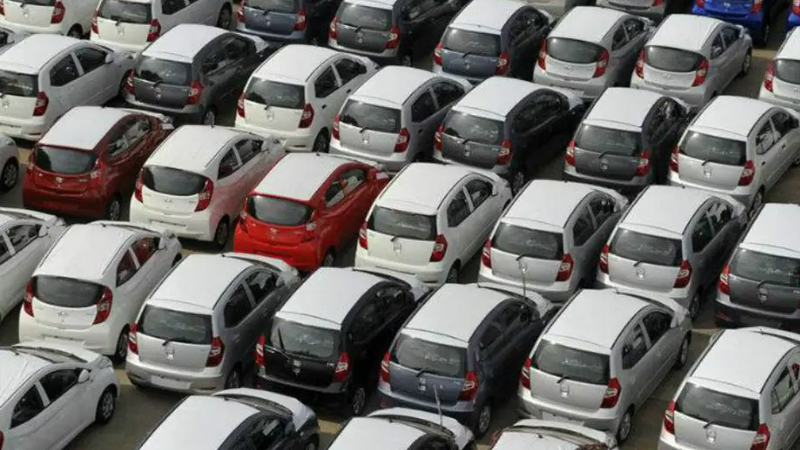
Il mercato automobilistico indiano è in gravi difficoltà. Mahindra & Mahindra ha registrato un calo del 15% delle vendite mensili totali a 40.142 unità a luglio 2019. Le vendite nazionali di Honda Cars India sono scese del 48,67% a 10.250 unità a luglio 2019.TVS Motor Company ha riportato un calo delle vendite di 13% a 2.79.465 unità a luglio 2019.
Questo enorme calo delle vendite è avvenuto nonostante l'introduzione di modelli recenti come XUV300 di Mahindra, Hyundai Venue e MG Hector.
Pertanto, ciò ha causato una reazione a catena in tutto il settore, dai produttori che offrono una serie di sconti e offerte e nuovi lanci per stimolare la domanda. A causa della minore domanda, i produttori devono anche ridurre la produzione, a volte anche chiudendo le loro fabbriche per adeguare le scorte. Discutiamo le ragioni del rallentamento in questo articolo.
Ragioni alla base di questo rallentamento:
Il settore automobilistico è stato colpito a causa delle imminenti elezioni generali, dove l'incertezza sui risultati ha spinto le persone a posticipare gli acquisti di veicoli.
Anche le gravi inondazioni in alcune aree hanno influito sulle vendite.
Inoltre, la disponibilità di credito è limitata, i prezzi del carburante sono alti, un intervento giudiziario ha aumentato notevolmente i costi assicurativi iniziali e i prezzi delle automobili sono aumentati a causa dei maggiori costi di input.
A causa della roadmap dei veicoli elettrici, i clienti temono che qualsiasi veicolo acquistato possa potenzialmente diventare obsoleto nel prossimo decennio circa. Pertanto, stanno chiaramente cercando di mantenere i loro veicoli attuali per evitare un acquisto non necessario se i veicoli elettrici sono in arrivo.
Tasse stradali più elevate e fuori standard, troppo frequenti e incoerenti, hanno portato le case automobilistiche a dover aumentare i prezzi dei veicoli.
La GST in continua crescita su parti automobilistiche e veicoli ha anche aggiunto ai guai del settore. Ciò ha infine portato i clienti a rifuggire dall'acquisto di questi veicoli e a un calo delle vendite.
Con l'aumento dei trasporti pubblici, della metropolitana e dei servizi come OLA e Uber hanno anche costretto le persone a
India’s automobile market is in deep trouble. Mahindra & Mahindra has registered a fall of 15 per cent in total monthly sales to 40,142 units in July 2019.The domestic sales of Honda Cars India have dived 48.67 per cent to 10,250 units in July 2019.TVS Motor Company has reported a sales decline of 13 per cent to 2,79,465 units in July 2019.
This massive drop in sales has happened despite the introduction of recent models like the Mahindra’s XUV300, the Hyundai Venue and the MG Hector.
Thus, this has caused a chain reaction across the industry ranging from manufacturers offering a number of discounts and offers and new launches to help instigate demand. Due to less demand, manufacturers are also having to cut down on production, sometimes even shutting their factories down to adjust inventory.Let us discuss the reasons behiend the slowdown in this article.
Reasons behind this slowdown:
- The automobile sector was impacted due to impending general elections, where uncertainty over outcome drove people to postpone vehicle purchases.
- Severe floods in some areas also affected the sales figure.
- In addition, credit availability is tight, fuel prices are high, a judicial intervention has raised upfront insurance costs sharply, and the prices of automobiles have gone up on account of higher input costs.
- Due to the Electric Vehicle roadmap, customers have fears that any vehicle that they purchase could potentially become obsolete in the next decade or so. Thus they are clearly looking to hold on to their current vehicles in order to avoid an unnecessary purchase if EVs are on the way.
- Higher and non-standard road taxes, which have been too frequent and inconsistent have led to auto-makers having to increase prices of vehicles.
- The ever-rising GST on automotive parts and vehicles has also added to the woes of the industry. This has eventually led to customers shying away from buying these vehicles and a downturn in sales.
- With increase in public transport, metro and services like OLA and Uber have also compelled people of

- Log in to post comments